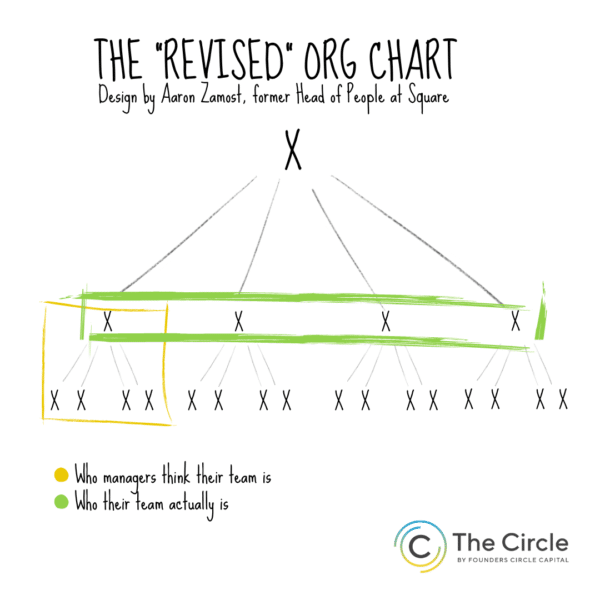Trending
4 Considerations To Craft Your Company’s Equity Strategy
/in Talent, Featured on Home, Equity & Compensation, Trending, I Need to Retain my Top Performers, Developing Your Team, Secondary Liquidity/by Matt McCueAdvancing Your Influence: Strategies for CFOs
/in Leadership & Vision, CFO Leadership, Developing Your Team, Featured on Home, Trending, Talent/by Matt McCueHow People Leaders Can Invest In Their Own Growth
/in Featured on Home, Trending, Talent, I Need to Retain my Top Performers, Developing Your Team, Leadership & Vision/by Matt McCueShare this entry

Managing Employee Morale
Tactics for Reducing Anxiety & Boosting Retention During Uncertainty
When the going gets tough, sometimes employees get going – out the door. Market uncertainty can strain employees’ job satisfaction, outlook on the company, and confidence in leadership – three components of the elusive retention metric known as employee morale.
Managing morale has become table-stakes for any company looking to maintain a happy and healthy workforce, but particularly for companies considering a budget cut, reduction in force (RIF), or navigating a challenging fundraising environment. It is also a responsibility shared across the entire executive suite, not just by people leaders.
A recent conversation with executives in The Circle led by Aaron Zamost – a veteran comms expert and former people leader at Square – revealed strategies for managing employee morale during uncertainty.
Treat Your Employees Like Adults
Morale is an art, not a science, that can be loosely defined as your employees’ level of satisfaction, engagement, and willingness to stay at the company. Market uncertainty can put an undue strain on morale and increase the likelihood of burnout. In a poll, 83% of leaders in The Circle said that employee burnout is on the rise in 2023.
To measure morale at the organization level, leaders in the conversation cited using employee engagement platforms like CultureAmp, Strava, and Lattice or creating periodic (quarterly, semi-annual) surveys asking employees questions like: “Do you believe in the work that you’re doing?”, “Do you have confidence in leadership?”, and “Do you feel accepted or included in the community to which you belong at work?”
At the individual employee level, morale is often characterized by an employee’s level of motivation or burnout, overall feelings about the company’s direction, and relationship with their manager. In both cases, Aaron advocates for transparency and the golden rule of “treating employees like adults”:
“Employees will draw their conclusions about the company’s future, either through what they hear or what you share. If you treat your employees like adults, acknowledging the challenges in the market and having an open conversation about the health of the business, you can build trust and help employees feel like they have a forum to voice their questions and concerns.” – Aaron Zamost, former Head of People at Square
Companies can lean into heightened transparency in many ways, from more frequent All Hands or town hall meetings to other avenues that ensure the leadership team is accessible and visible “in the trenches”. Whatever the forum or format, delivering frequent and consistent messaging on the company’s financial performance, goals and targets is key. It’s also hugely important to go beyond the “what” and always address the “why” behind these updates.
Increasing transparency with employees can be nerve-wracking at first, one CHRO admitted. However, she found that it ultimately led to her employees feeling more empowered as individual contributors to the company’s financial performance.
There is, of course, a delicate balance between transparency and divulging too much information to avoid stoking unnecessary fears and increasing the potential for leaks (which are inevitable). Aaron said leaders might want to avoid getting into specifics or making big promises about fundraising status or company runway. However, it’s still essential to have a well-crafted script on how you’re addressing those challenges. “In a previous role, we ran internal comms campaigns the way we ran external PR campaigns,” said Aaron. “We had briefing docs, talking points, and timelines to execute our message.”
Support Your Team (They’re Not Who You Think)
Managing morale can often feel like a “lonely leader” problem, especially for leaders who only tend to their functional areas and direct reports. But when it comes to improving morale across the organization, leaders need to rely on and support one another, too. “You must remember that you are part of a cohort of leaders,” explained one CHRO. Everyone is spreading the same message about the company’s health; therefore, everyone in that managing cohort needs to be operating from the same information with the same talking points and strategy for collectively managing employees through the change curve.
Taking this a step further, Aaron illustrated (literally, with a sharpie and paper) the point that most people managers and leaders think of their “team” as the people below them. In reality, their “team” is actually the set of peers at their level. He cited an opportunity to broaden manager training in a similar way to help leaders recognize the power of this horizontal collaboration.

[Aaron’s simple yet powerful illustration of how people should think of their team horizontally instead of vertically.]
It’s Okay to Have Some Fun
Leaders needn’t necessarily “throw money at the problem” with salary increases or spot bonuses to keep employees happy and engaged. Often it’s minor improvements to the company culture that have the most significant impact, especially in a flexible or hybrid work setting. Some of the budget-friendly tactics that have worked well for leaders in The Circle include:
- Internal mentorship programs that leverage your executive team
- Sabbaticals or other mandatory breaks for tenured employees
- Celebrating wins and recognizing progress, in any and all forms
- Wellness programs or challenges focused on reducing burnout
- Unexpected “recharge days” to give everyone a break
If you don’t have the budget to roll out a new program, consider a fun team-building activity or experience in which the whole company can participate. One people leader shared that their organization recently implemented a mohawk challenge: “If we beat our January revenue goal, our head of sales and finance had to shave their heads into mohawks – sure enough, we beat the goal, and they did. We were shocked at the level of engagement it drove.” Another finance leader started a rock-paper-scissor challenge, complete with a bracket, and it ended up boosting engagement with virtual employees across the organization who had a reason to meet up and some fun conversation starters before their epic Roshambo face-off.
A little levity can go a long way. Aaron once implemented a “F*ck Up of the Month” segment at their town hall meetings where executives and employees could share their biggest screw-ups and what they learned from the experience. “I found it to be a useful way to encourage positive thinking in light of the bad things that were happening, and it was good for morale for employees to know that they wouldn’t get in trouble for screwing up as long as they were aware of their mistakes and learned from them.”
Recovering from a RIF
While layoffs and reductions in force (RIFs) may be unavoidable and sometimes even expected, they can still pose an existential threat to morale, especially in a down market. The key with RIFs is to avoid doing them more than once, which can catastrophically impact trust in an organization. “If you do a second RIF, you have set yourself up for significantly longer-term pain because everybody’s going to wonder whether you’re going to do a third one,” explained Aaron. Similar sentiments have come up in past Circle conversations on this topic over the years – cut once, cut deep.
Aaron also advocated putting a lot of forethought into your RIF communication strategy, not just to the employees let go but also to those that remain. “Communicate quickly with the people who are not leaving the company and focus on the health of the business and finding ways to help them feel secure about the company’s future, without overpromising.”
The Takeaway:
Managing morale during market uncertainty isn’t just one person’s job but every leader and people manager’s. A coordinated communication strategy emphasizing transparency is critical, as is finding ways to keep employees engaged and connected to their peers.
Apply to join The Circle and gain access to a private leadership community of CXO peers that regularly exchange ideas, insights, and support.
Related Blog Posts

4 Considerations To Craft Your Company’s Equity Strategy

Advancing Your Influence: Strategies for CFOs




